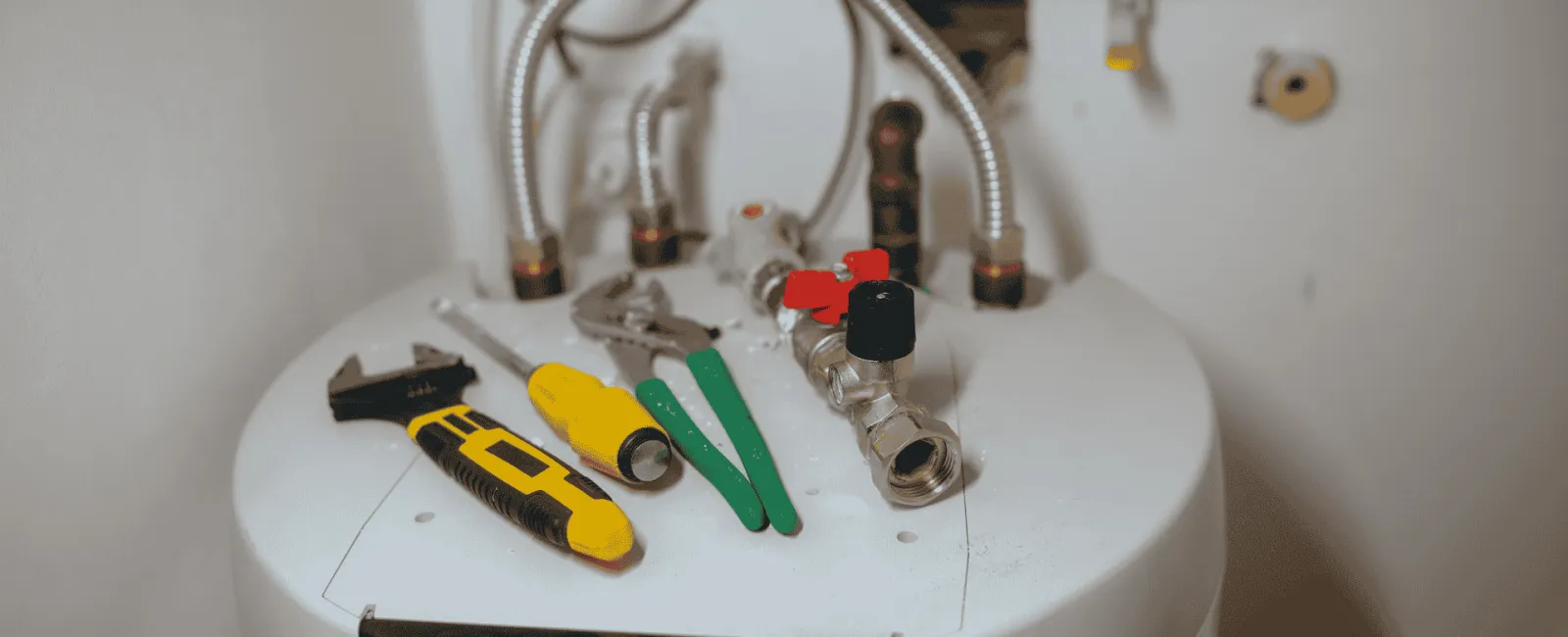If your water softener isn't working properly, you're not alone. These systems are incredibly effective at removing minerals from your water, but like any appliance, they can run into problems. The good news? Many common water softener issues are surprisingly easy to diagnose and fix yourself.
In this guide, we'll walk you through the most common signs your water softener isn't working, what's causing the problems, and practical solutions to get your system back on track.
How to Tell If Your Water Softener Is Not Working
Before you start troubleshooting, confirm that your water softener is indeed malfunctioning. Here are the telltale signs:
Hard water symptoms are back: Scale buildup on faucets and fixtures, soap doesn't lather well, dishes have spots and streaks, and your laundry feels stiff and scratchy.
Your appliances are suffering: Your water heater is making strange noises, your dishwasher leaves residue on dishes, and you're noticing reduced efficiency across the board.
Skin and hair issues: Your skin feels dry and itchy after showering, and your hair looks dull and feels brittle. These are classic signs that hard water minerals have returned to your water supply.
If you're experiencing any of these symptoms, it's time to investigate. Let's look at the most common culprits.
1. Your Water Softener Is Not Using Salt
One of the most frequent problems homeowners encounter is a water softener that isn't using salt. You check the brine tank, and the salt level hasn't budged in weeks.
The Problem: Salt bridging occurs when a hard crust forms in your brine tank, creating a space between the water and the salt. This prevents the salt from dissolving and making the brine solution your system needs to regenerate.
How to Fix It: Gently push on the salt in your brine tank with a broom handle. If it's solid on top but hollow underneath, you've got a salt bridge. Break it up carefully, then pour warm water over the remaining salt to help it dissolve more easily. In the future, use high-quality salt pellets and prevent humidity from entering the tank.
Another Culprit: Salt mushing happens when dissolved salt recrystallizes at the bottom of the tank, forming a thick sludge. If your tank has water but the salt isn't dissolving, you'll need to drain the tank and remove the mushy salt buildup.
2. Water Softener Not Regenerating
Your water softener needs to regenerate regularly to recharge the resin beads that remove hardness from your water. If regeneration isn't happening, hard water minerals will start passing through untreated.
The Problem: Most often, this is a timer or control valve issue. Your system might be programmed incorrectly, or the motor that drives the regeneration cycle could be malfunctioning.
How to Fix It: First, check your control panel settings. Ensure the time is set correctly and that your regeneration schedule aligns with your household's water usage. If the timer is functioning but regeneration still isn't occurring, you may have a faulty valve motor or position switch that requires professional attention.
Quick Test: Try running a manual regeneration cycle. If your system won't regenerate even when you force it manually, you're likely dealing with a mechanical or electrical problem that requires a professional repair.
3. Low Water Pressure Throughout Your Home
If you've noticed your water pressure has dropped since installing or servicing your water softener, the softener itself might be the problem.
The Problem: Mineral buildup can clog the resin tank, control valve, or the screens and filters inside your system. Additionally, if the bypass valve is partially closed, it will restrict water flow.
How to Fix It: First, check that your bypass valve is fully open. If pressure improves when bypassed, the problem is inside your softener. Clean the screens in the control valve, check for sediment in the resin tank, and make sure nothing is blocking water flow through the system.
If you're experiencing low water pressure at specific faucets and fixtures, the culprit might be mineral deposits in the aerators or showerheads rather than the softener itself. A whole-house water filtration system can help prevent these buildups throughout your entire plumbing system.
4. Brine Tank Problems: Not Filling or Not Draining
Your brine tank plays a critical role in the regeneration process. If it's not filling with water or not emptying properly, your softener can't do its job.
Brine Tank Not Filling: Check the float assembly in the brine tank. If it's stuck or damaged, it won't allow water to enter. Also, inspect the brine line for clogs or kinks that might be preventing water flow.
Brine Tank Not Draining: After regeneration, your brine tank should be mostly empty, with only a few inches of water remaining at the bottom. If the toilet is staying full, check the drain line for clogs, ensure the float isn't stuck in the up position, and verify that the drain line has proper flow.
Pro Tip: Always keep a small amount of water in your brine tank (typically a few inches). If it's bone dry or completely full, something is wrong with the fill or drain cycle.
5. Water Softener Running Continuously
If your water softener won't stop running, it's wasting water, driving up your utility bills, and potentially causing bigger problems down the road.
The Problem: A stuck valve, faulty timer, or control head malfunction can cause your softener to get stuck in a continuous cycle. Sometimes, a clog in the drain line prevents the system from completing its cycle and moving to the next stage.
How to Fix It: First, try unplugging your softener for a few minutes to reset it. If it starts running continuously again, check the drain line for clogs or restrictions. Listen for the motor. If it's constantly running without the system cycling through stages, the control valve or timer likely needs replacement.
6. Discolored or Foul-Smelling Water
If your softened water appears brown, yellow, or has an unpleasant odor, don't ignore it. This could indicate several different problems.
Rusty or Brown Water: This typically indicates the presence of sediment or rust in your resin tank. Run a cleaning cycle with a resin cleaner, and if the problem persists, you might need to replace the resin bed.
Rotten Egg Smell: Bacteria can grow in the brine tank, especially if it sits stagnant for long periods. Clean the tank thoroughly with a bleach solution (following the manufacturer's guidelines), then run a complete regeneration cycle.
Prevention: Regular maintenance is key. Consider adding a water filtration system before your softener to remove sediment and reduce bacteria growth. This protects both your softener and your entire plumbing system.
Preventing Water Softener Problems
The best approach to resolving water softener troubles is to prevent them in the first place. Use high-quality salt pellets, check salt levels monthly, and keep your brine tank at least one-third full. Schedule annual professional maintenance to inspect components, clean the resin tank, and test water hardness. Adding a whole-house water filtration system removes sediment before it reaches your softener, extending its life and improving performance.
How Water Quality Affects Your Plumbing
When your water softener isn't working properly, hard water wreaks havoc on your entire plumbing system. Mineral buildup accumulates inside your water heater, reducing efficiency and shortening its lifespan. Scale clogs your pipes and reduces water pressure. Your faucets and fixtures deteriorate faster, and appliances like dishwashers work harder and fail sooner. This is why addressing water softener problems quickly matters.
When to Call a Professional
While many water softener issues can be resolved with basic troubleshooting, some problems require professional expertise. If your softener continues to have problems after troubleshooting, you notice leaks around the tank or control valve, or you're dealing with complex mechanical or electrical issues, it's time to call in the professionals. Your water quality isn't something to compromise on.
At Dalmatian Plumbing, we combine reliability, speed, and precision to solve water quality issues throughout Metro Atlanta. With over 75 years of combined experience, our licensed plumbers can diagnose water softener problems quickly and get your system working properly again.
Whether you need water softener repair, want to explore whole-house water filtration options, or have questions about your home's water quality, we're here to help. Our team understands how Atlanta's water characteristics impact your plumbing, and we provide honest recommendations tailored to your specific situation.
Don't let hard water continue damaging your plumbing and appliances. Contact Dalmatian Plumbing by phone or schedule service online. We'll diagnose the problem, explain your options with transparent pricing, and restore your water quality so you can enjoy the benefits of truly soft water again.


